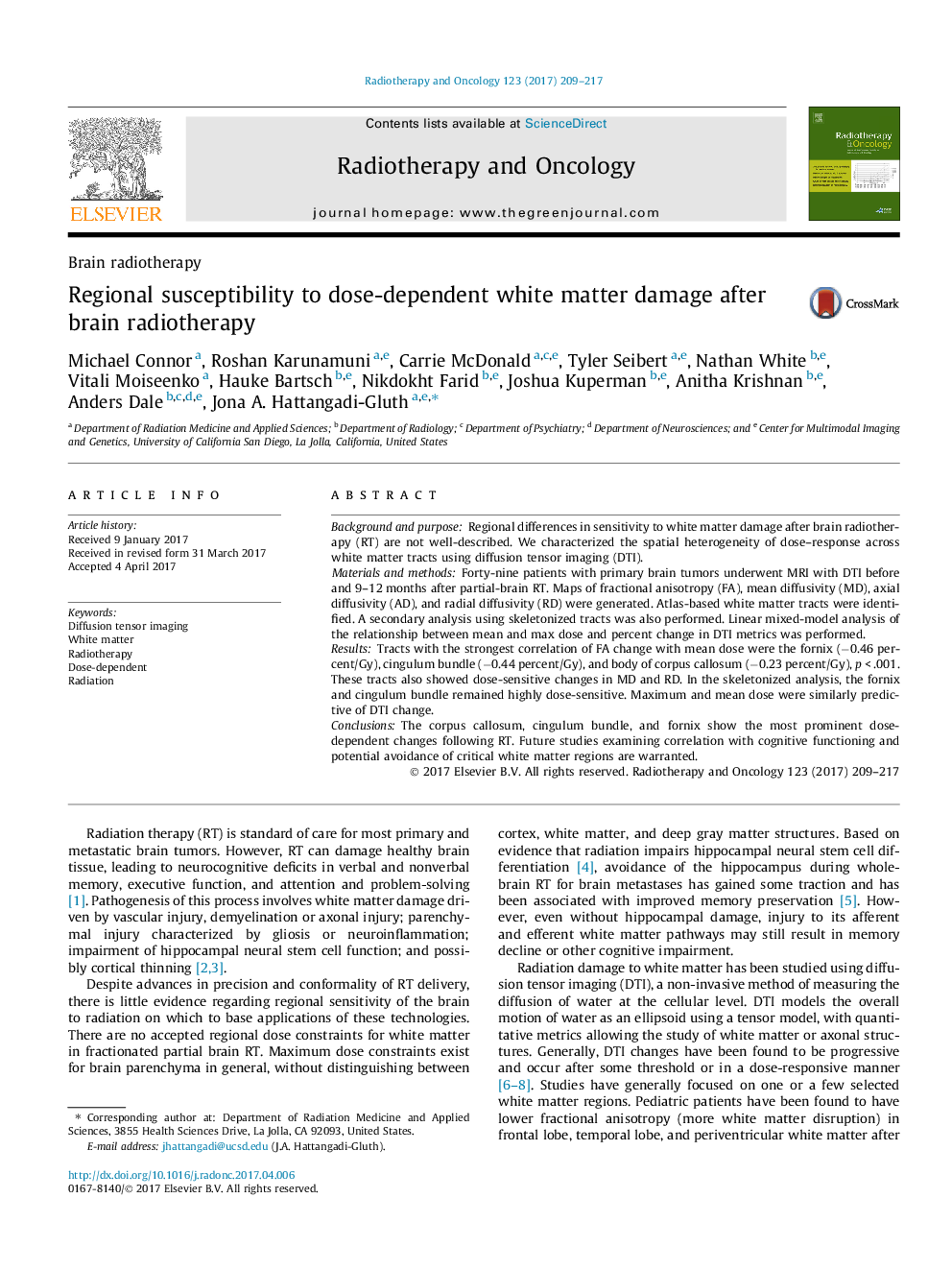| Article ID | Journal | Published Year | Pages | File Type |
|---|---|---|---|---|
| 5529530 | Radiotherapy and Oncology | 2017 | 9 Pages |
Background and purposeRegional differences in sensitivity to white matter damage after brain radiotherapy (RT) are not well-described. We characterized the spatial heterogeneity of dose-response across white matter tracts using diffusion tensor imaging (DTI).Materials and methodsForty-nine patients with primary brain tumors underwent MRI with DTI before and 9-12 months after partial-brain RT. Maps of fractional anisotropy (FA), mean diffusivity (MD), axial diffusivity (AD), and radial diffusivity (RD) were generated. Atlas-based white matter tracts were identified. A secondary analysis using skeletonized tracts was also performed. Linear mixed-model analysis of the relationship between mean and max dose and percent change in DTI metrics was performed.ResultsTracts with the strongest correlation of FA change with mean dose were the fornix (â0.46 percent/Gy), cingulum bundle (â0.44 percent/Gy), and body of corpus callosum (â0.23 percent/Gy), p < .001. These tracts also showed dose-sensitive changes in MD and RD. In the skeletonized analysis, the fornix and cingulum bundle remained highly dose-sensitive. Maximum and mean dose were similarly predictive of DTI change.ConclusionsThe corpus callosum, cingulum bundle, and fornix show the most prominent dose-dependent changes following RT. Future studies examining correlation with cognitive functioning and potential avoidance of critical white matter regions are warranted.
